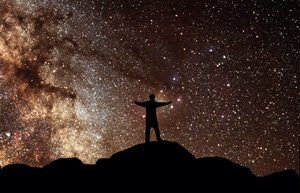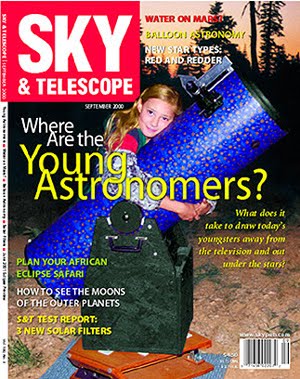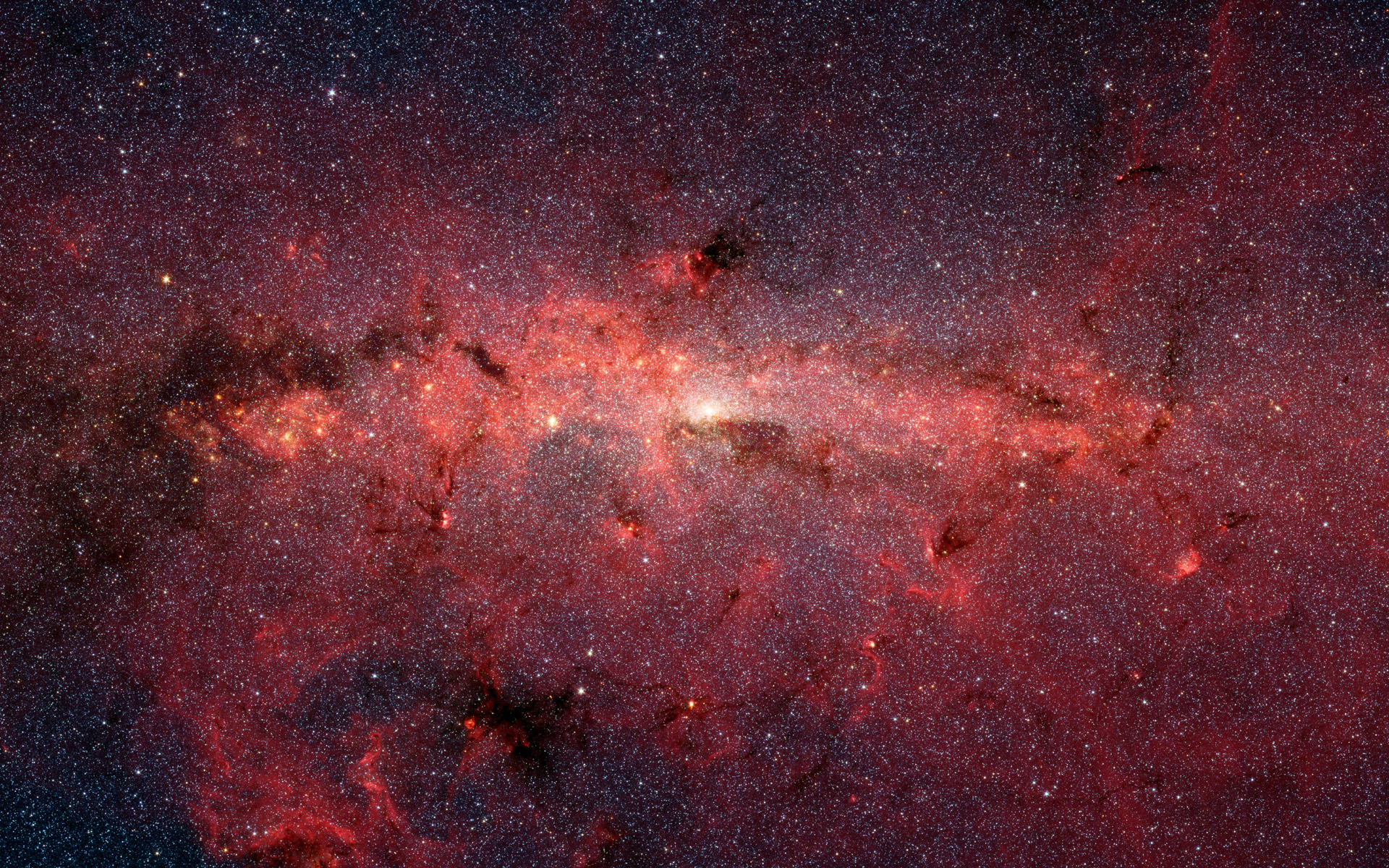Yes... in a deep, and dark, December...
But I was not alone.
Last night I was joined at Henry Coe State Park east of Morgan Hill California by Mark Johnston and Andrew Pierce for a "short" night of relatively dark sky observing. I've certainly seen darker nights, but as winter arrives and reduces our chances to get away, any night observing will do. So, we three took the opportunity and stayed until our work lives dictated we leave at midnight. First, there was a huge display of the Zodiacal Light. I mentioned it, and Andy immediately agreed, well to the south of the Milky Way and along the ecliptic. A huge triangular display. Nice! We were off to a good start.
The stats. Temps dropped to near freezing during the night. Expecting it to be cold, I had three layers of thermals under my street clothes, fleece pullover and heavy jacket. I have to laugh, as it reminds me of years ago when I was so bundled up I couldn't bend down to put the scope away without first removing several layers! Last night, even with the chemical toe and hand warmers, those parts were chilled. But, at least we in the bay area can get to our observing (brighter regular) sites in the winter compared to you folks in the Sierra foothills!
Well, it was cold - about 10:30 Mark called out 34 degrees with a nice low 57% R.H. There was essentially no wind, seeing was very good, with some occasional moments of excellent and average. Transparency was varied between excellent and average. What moisture there was in the air was freezing out and settling in a haze over the valleys. Our three telescopes were my 18" f/4.5 Obsession, a 14.5" Teleport, and a C11.
The only difficulty I had was with Megastar and The Sky. I had installed a new hard drive on my laptop, and the programs were not finding the Guide Star Catalog, so I was operating with a lot fewer stars in my laptop's eyepiece fields. The commands and everything else were foreign as well, so I need to somehow transfer settings from my desktop system to the laptop for the next session. This unexpected "challenge" did slow me down a bit - and caused some serious "sounds of consternation" at times. But, because I had laid out my target list in a logical star-hop, it at least made moving from one target to the next easier. I'd say, all in all, the three of us enjoyed the night.
Here are my observations. You can see the initial list at http://www.resource-intl.com/Deep.Sky.Dec.07.html
Comet Holmes
I am concluding this is a great comet. It is easily naked eye, brighter and larger than Double Cluster nearby. A 20mm eyepiece shows a sharply defined bow shock, ill defined and very indistinct back (ESE) edge. Many dozens of field stars show through. The inner coma is very large and elongated with bright knot (no stellar or distinct core) nearly at western end of a long bright streak. The streak must be a dim tail, and its nucleus is a slight brightening toward but not all the way to the western edge of the bright inner streak. Panning around, it is actually shocking to find this all surrounded by very large dim haze overflowing the 47' field of view. From the front of the nucleus "streak" to the leading edge of the comet is about 18'. To N is 35', S is 23', overall core to back is 50'+. Awesome comet!
Abell 3 Cas. PN 60" 18.2P 02 12 06 64 09 03 SH2-189 PK13+2.1
Very faint disk occasionally with 12mm, SSW of bright star and before dimmer star. Using OIII. Averted only.
N0896 Cas. BN 21.0' 02 26 40 62 05 00
Very nice low surface brightness nebula, brighter section separated to the W and smaller than larger part with star on south extremity. Other nebula to north, with hints of nebulosity all over the place. Large section is elongated N/S and about 18'x7'. The other smaller section is irregular. OIII with 12mm.
Sh2-190 Cas. BN 96"x80" 02 32 48 61 30 00 LBN 654 IC 1805 Bright patch in prior observation may be Tombaugh 4, OC, and has very dim long channel of nebulosity extending from it mostly N to a section about 20', which then runs E/W at a bright field star to near very dim Berk 65 (does not touch it). It would be easy to spend hours in this region tracing nebulosity.
NGC 1027 Cas. OC 20.0' 6.7 02 42 36 61 35 42
Very nice rich cluster with many dozens of stars. One star much brighter than others, wide magnitude range. In rich star field.
Sh2-193 Cas. BN 2.0' 02 47 40 61 58 33
Sh2-192 Cas. BN 1.0' 02 47 18 61 57 58
Sh2-194 Cas. BN 2.0' 02 47 23 61 55 00
All three are very small faint glows possibly involved with very dim stars.
Sh2-198 Cas. BN 9.0' 02 50 01 59 42 00
Nice nebulous glow around and involving semicircle of 8 star opened on the ENE. Seen at 103x w/o filter. OIII and more mag does not work.
Sh2-197 Cas. GX 5.8'x1.7' 02 41 55 59 36 15 Maffei 2
Maybe at best. Just a dim slightly elongated haze ESE of GSC 3712:163
Sh2-195 Cas. BN 3.0'x1.0' 02 40 04 59 37 02
Subtle, running N/S appears like brush stroke, very dim haze.
Sh2-191 Cas. GX 3.4'x1.7' 11.4 02 36 18 59 39 19 Maffei 1
Obvious at 103x and 194x as haze with several stars overlaying it. Maybe 10'x3' elongated mostly E/W.
NGC 884 Per. OC 29.0' 6.1 02 22 20 57 08 00
NGC 869 Per. OC 29.0' 5.3 02 19 04 57 08 06
Naked eye, the double cluster appears almost as a figure 8, 2 lobes.
M34 Per. OC 35.0' 5.2 02 42 08 42 45 00 NGC 1039
Large, bright, coarse open cluster with three distinct parallel chains defining it running primarily NW/SE.
Abell 4 Per. PN 20.0" 16.7P 02 45 23 42 33 03 PK144-15.1
Direct vision with 12mm and OIII. May have central star. With 7mm and no filter can hold easily averted, no central star. Pretty chain of stars identify location.
NGC 891 And. GX 14.3'x2.4' 10.8 02 22 33 42 21 03
Long thin ghostly edge on galaxy with obvious dust lane. Wonderful view with the 12mm.
AGC 347 And. GXCL 56' 13.3 02 25 48 41 52 00
Viewed about 8 of the group. Conditions deteriorated, seeing at high power was a problem.
N1003 Per. GX 5.5'x1.8' 12.0B 02 39 16 40 52 22
Moderately bright, spindle, tapered ends, 3x1 E/W slightly brighter core, star offset to W of center involved.
NGC 1023 Per. GX 8.7'x2.3' 10.4 02 40 24 39 03 46
Very pretty classic spiral galaxy, very elongated, maybe 7'x2.5', hints of spiral structure, bright core with stellar nucleus. Oriented E/W.
N1058 Per. GX 3.0'x2.7' 11.8B 02 43 30 37 20 30
Roundish, dim central core, star involved offset to W, maybe disrupted galaxy with knot on the S. Odd looking galaxy, but fairly bright.
NGC 752 And. OC 49.0' 5.7 01 57 48 37 51 00
Huge coarse open cluster with one star brighter than the rest, many fairly bright stars of same magnitude, then third group of similar but dimmer mag. Very nice view - overflows eyepiece fields, large and obvious in finders.
N0890 Tri GX 2.7'x1.8' 12.2B 02 22 01 33 15 47
Bright nearly stellar nucleus surrounded by elongated bright core/disk. Core appears slightly offset from extended E/W outer dimmer disk. About 3'x1.7'.
By the time I'd finished, I was cold and tired. But after nearly six hours of observing, it is no surprise. The drive down the mountain and home was easy - by 1 a.m. I was out. The alarm clock went off far to early, but even in my precognizant haze, I knew I'd had a great time. This time of year, you've got to get it when you can.
Let's hope for some breaks in the weather for next month's new moon cycle. I may work more on the December list, but I also have a new list waiting for January, top right on this page.
Clear skies.
Mark











